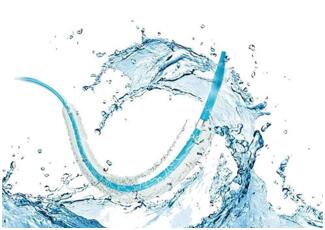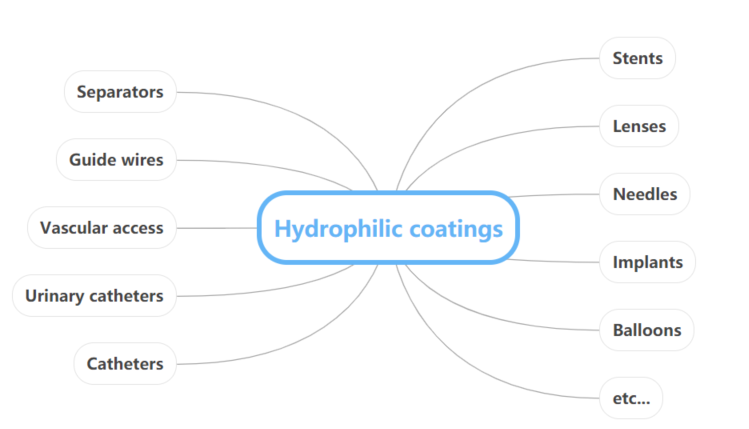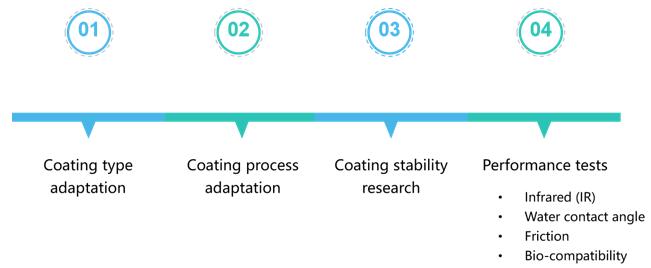Hydrophilic surfaces refer to the surfaces with a contact angle θ<90°. Most of medical device consumable surfaces can not reached to that hydrophilic and need to be treated with coating. Commonly used coating materials include polyvinylpyrrolidone (PVP), polyvinylalcohol (PEO), polyacrylic acid (PAA) and other materials[1], which can attract and retain moisture to give the surfaces lubricating quality, thereby reducing the potential trauma caused by consumables entering the human body, improving the performance of these invasive procedures, and reducing protein adsorption, reducing platelet activation at the same time.

Figure 1. Schematic diagram of the hydrophilic coating on medical device
At present, hydrophilic coatings are mainly used in interventional medical devices of the cardiovascular, circulatory, nervous, urinary and vascular system, which include the inner and outer surfaces of:

Figure 2. Application examples that usually need hydrophilic coatings

CD Bioparticles is a world-renowned trusted biotechnology company with a skilled team of scientists and years of experience. We are robust with polymer material synthesis and processing, as well as medical device applications. Please feel free to contact us and our experienced technicians will give you the most detailed answers to your questions.
Reference:
1. Darem, A.; et al. Hydrophilic and hydrophobic materials and their applications. Energy sources, part A: Recovery, Utilizaiton, and environmental effects. 2018, 40 (22): 2686-2725.
1. Download the template.
2. Enter product information on the template (maximum number of products: 200).
3. Load the file using selector below.
1. Download the template.
2. Enter product information on the template (maximum number of products: 200).
3. Load the file using selector below.